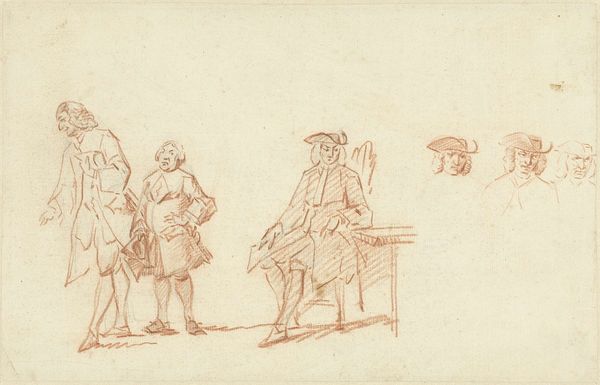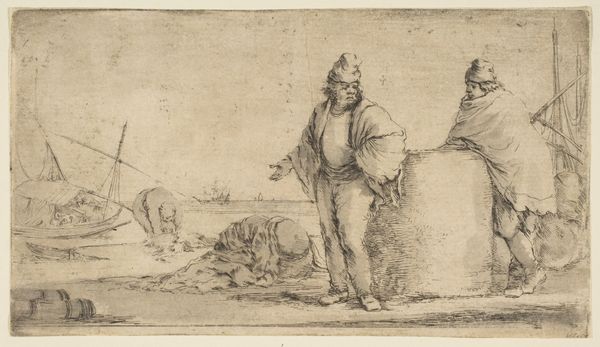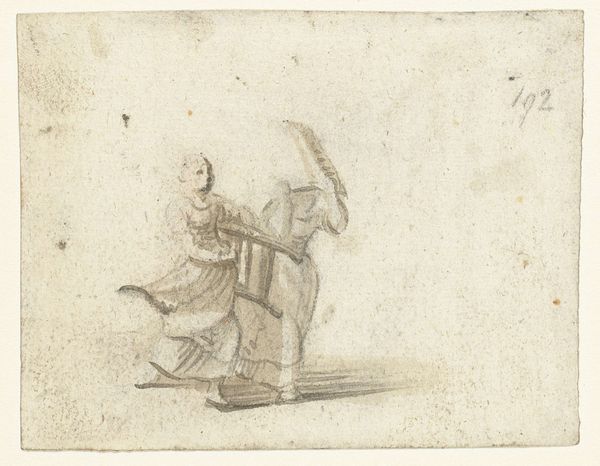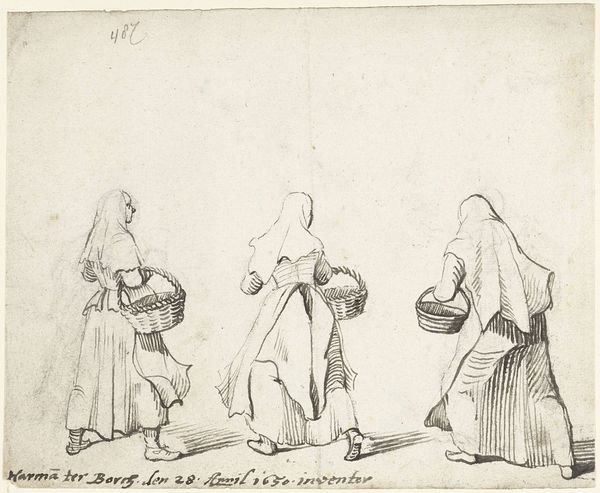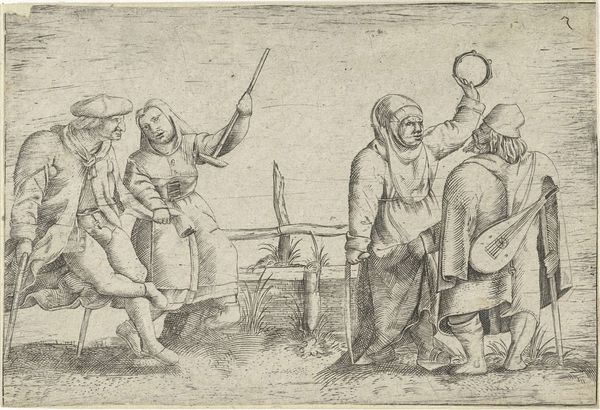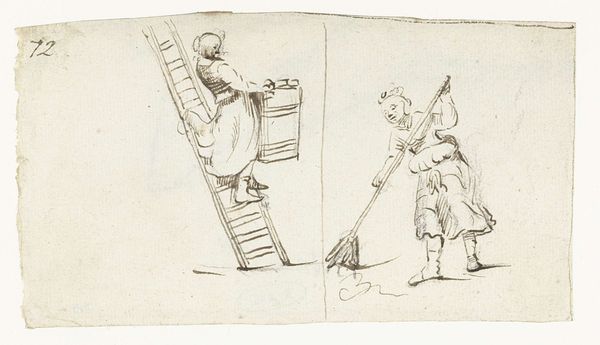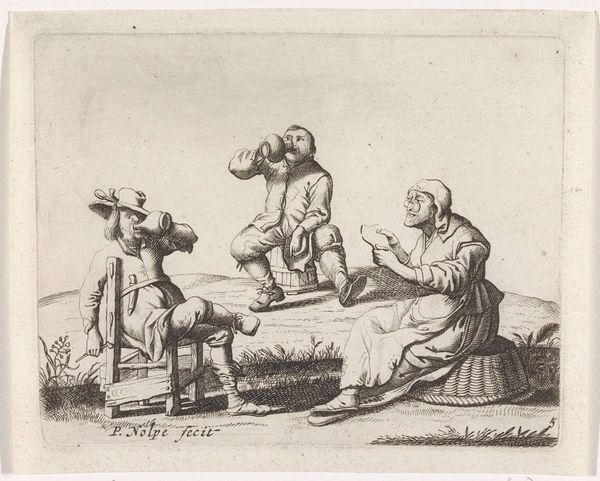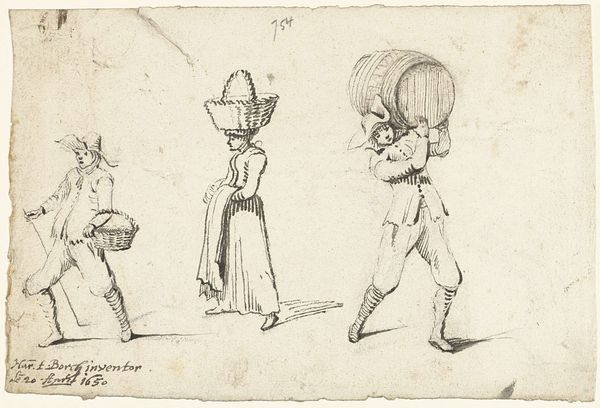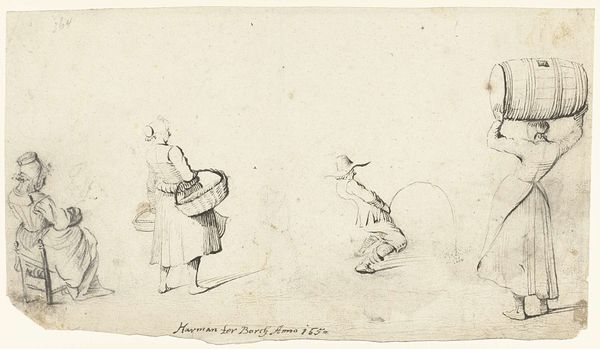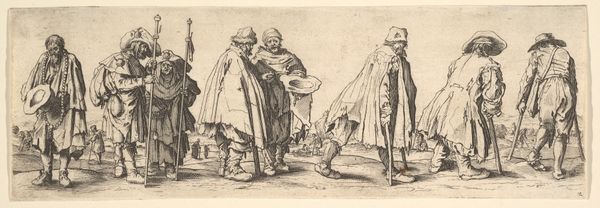
#
light pencil work
#
quirky sketch
#
pencil sketch
#
incomplete sketchy
#
personal sketchbook
#
pen-ink sketch
#
sketchbook drawing
#
pencil work
#
sketchbook art
#
fantasy sketch
Dimensions: height 98 mm, width 128 mm
Copyright: Rijks Museum: Open Domain
Editor: Here we have "Woman Walking with Children, from Behind," potentially dating to 1650, by Harmen ter Borch. It's a quick pen and ink sketch on paper, and what strikes me most is how utilitarian it feels. What do you see in this piece? Curator: Well, immediately I’m drawn to the raw materiality of the sketch. Look at the artist's hand, the very act of mark-making. Ter Borch wasn't interested in some idealized vision, but in the reality of labor. Think about the societal context. What was the role of women and children in the 17th century Dutch Republic? How would that relate to our understanding this work today? Editor: So you're seeing a connection to daily life and the realities of their world, presented in this almost disposable format? Curator: Exactly. The sketch itself, its existence, speaks to the economic realities of art production. This wasn't intended, perhaps, for display in some wealthy home. More like, a means to an end or a notation to be used elsewhere. Notice the woman's load. How does the labor signified by this figure connect to notions of gender and class in 17th Century Netherlands? Editor: That’s a really interesting point. It definitely shifts my perspective from just seeing it as a simple drawing. So, it’s not just about what's depicted, but about the materials and methods. Does seeing art through that lens challenge traditional ideas? Curator: Absolutely! It democratizes art. We start questioning what constitutes ‘high art’ when we consider the process, the materials, the very labour embedded within the piece. Editor: That's a very different take. I'll definitely be paying more attention to how and why something was made. Curator: And who it was made for! Understanding the social fabric surrounding the materials used to construct a work, really enables it to breathe and expand.
Comments
No comments
Be the first to comment and join the conversation on the ultimate creative platform.
